Thunderbird Soars at Motor Muster
 Crowds flocked to Greenfield Village for our 2025 Motor Muster. / Image by Matt Anderson
Crowds flocked to Greenfield Village for our 2025 Motor Muster. / Image by Matt Anderson
Once again Father’s Day weekend brought a favorite event to Greenfield Village. Our 2025 Motor Muster, held June 14-15 and celebrating car culture from 1933 to 1978, featured more than 650 automobiles, trucks, motorcycles, military vehicles, and bicycles. Each Motor Muster features a special theme, and this time our spotlight fell on the Ford Thunderbird, seventy years after the sporty personal car was introduced for the 1955 model year. Thunderbird was a hit over eleven different styling generations through 2005, taking only a brief pause in production from 1998 to 2001.
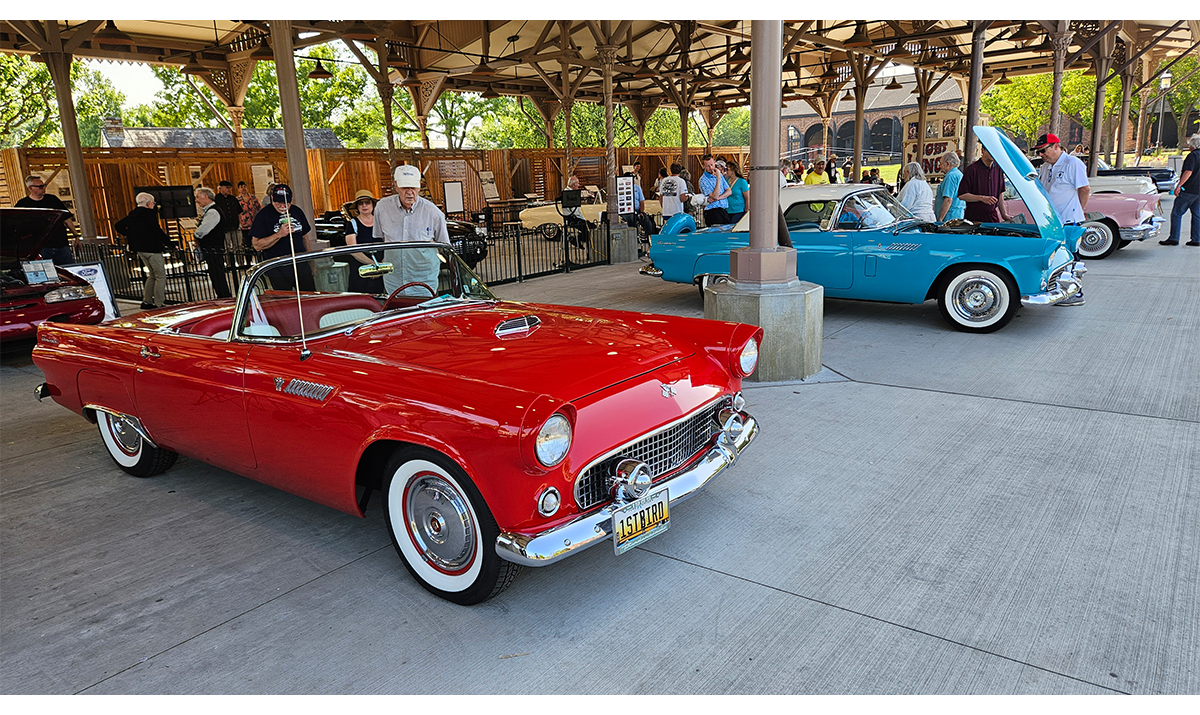
Detroit Central Market housed Thunderbirds from seven of the car’s eleven styling generations, including a couple of post-1978 examples. / Image by Matt Anderson
We wanted to showcase Thunderbird properly, so our friends at the Water Wonderland Thunderbird Club and the Vintage Thunderbird Club International helped us pull together a selection of some of the best T-Birds pull together a display in Detroit Central Market featuring some of the best T-Birds ever built Detroit Central Market. We had cars from seven of Thunderbird’s eleven generations. Together, they represented the original two-seat “Little Birds” of the mid-1950s, the four-seat “Square Birds” of the late 1950s, the angular “Bullet Birds” of the early 1960s, and the larger luxury-focused Thunderbirds of the early 1970s. From The Henry Ford’s own collection, we included our 2002 Ford Thunderbird, serial number one from the final generation, and our 1962 Budd XT-Bird, which Budd pitched to Ford in hopes of reviving the partnership that had Budd building body components for two-seat T-Birds several years earlier. Our 2002 model wasn’t the only post-1978 T-Bird in the show. We also included a 1994 Thunderbird representing the model’s tenth generation.
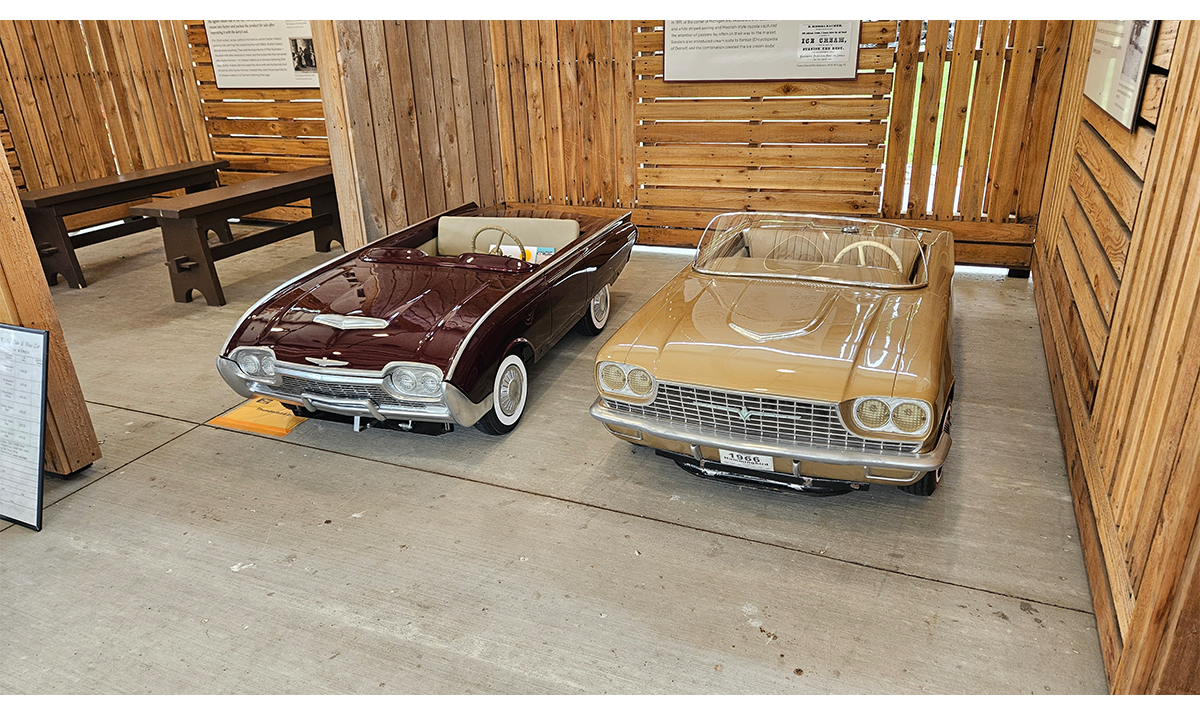
Thunderbird Jr. kiddie cars were built in cooperation with Ford from 1955 to 1967. / Image by Matt Anderson
There was another big—make that small— feature in Detroit Central Market. Fourteen Thunderbird Jr. cars added to the fun. Built in Mystic, Connecticut, with the blessing of Ford Motor Company, the Thunderbird Jr. was a scaled-down version of the real thing powered either by an electric motor or a single-cylinder gasoline engine. The junior cars were updated each year to match the look of the real T-Bird, and paint colors were all factory-correct. Smaller Thunderbird Jr. cars, roughly one-quarter size, were intended for children and either given away by Ford dealers or sold by high-end retailers like FAO Schwarz. Larger versions, about one-third size, were used at carnivals and amusement parks. About 5,000 Thunderbird Jr. cars were produced from 1955 to 1967. The fourteen examples at Motor Muster may have been the largest gathering of these little cars since the factory closed nearly sixty years ago.
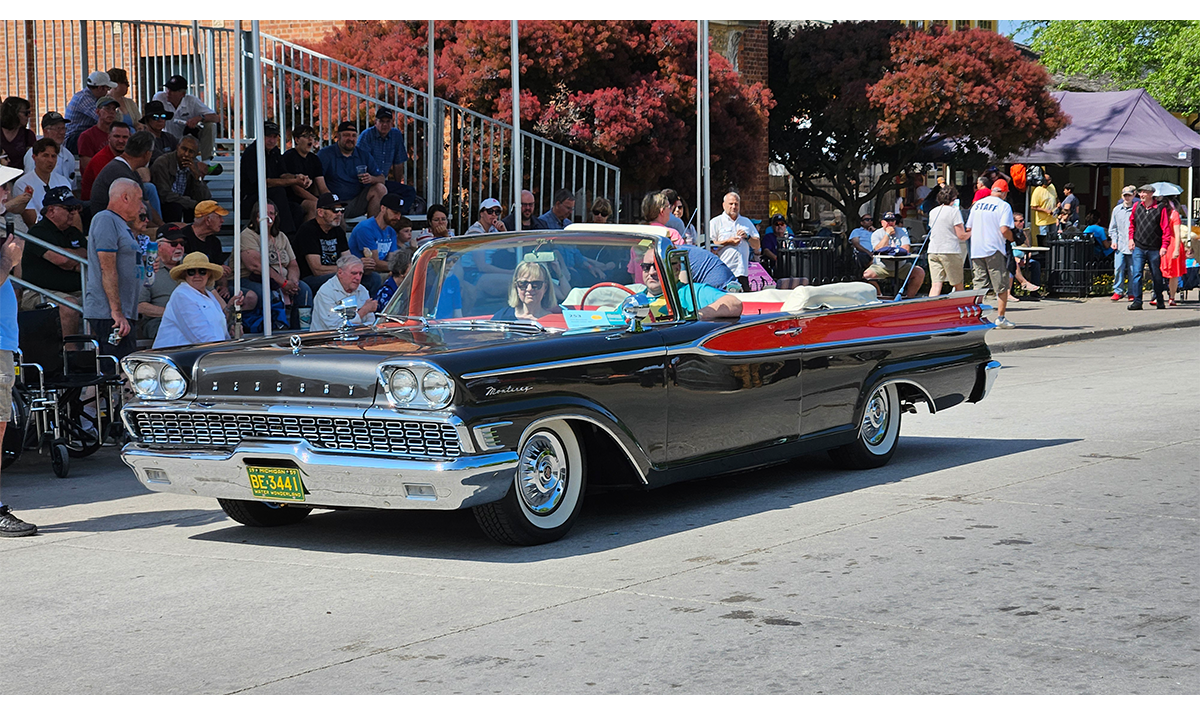 Pass-in-review programs shared some of the history behind participating cars, like this 1959 Mercury Monterey. / Image by Matt Anderson
Pass-in-review programs shared some of the history behind participating cars, like this 1959 Mercury Monterey. / Image by Matt Anderson
From the Armington & Sims Machine Shop to the Daggett Farmhouse, Greenfield Village was packed with historic vehicles. A visitor might easily spend all day walking around to see everything. But for those who preferred to let the show come to them, we offered pass-in-review programs throughout the weekend. As spectators relaxed on shaded bleachers, expert narrators offered insights and expertise on participating vehicles that rolled through in a steady chronological parade. While most of these presentations were organized by decade, we had special sessions devoted to commercial vehicles, race cars, motorcycles, bicycles, and —of course— Thunderbirds.
The cars were complemented by a variety of musical performances and historical vignettes. At Town Hall in the heart of the village, the Village Cruisers offered a selection of 1950s vocal pop perfect for the chrome-and-tailfins era. At the same location, Larry Callahan and the Selected of God Quartet sang stirring freedom songs from the 1960s Civil Rights Movement. Their performance offered a wonderful preview of programming to come with the opening of the Jackson Home next year. The 1970s came alive through the Mach I band as they played classic rock hits both at the gazebo near Ackley Covered Bridge and in a larger Saturday evening concert on Main Street.
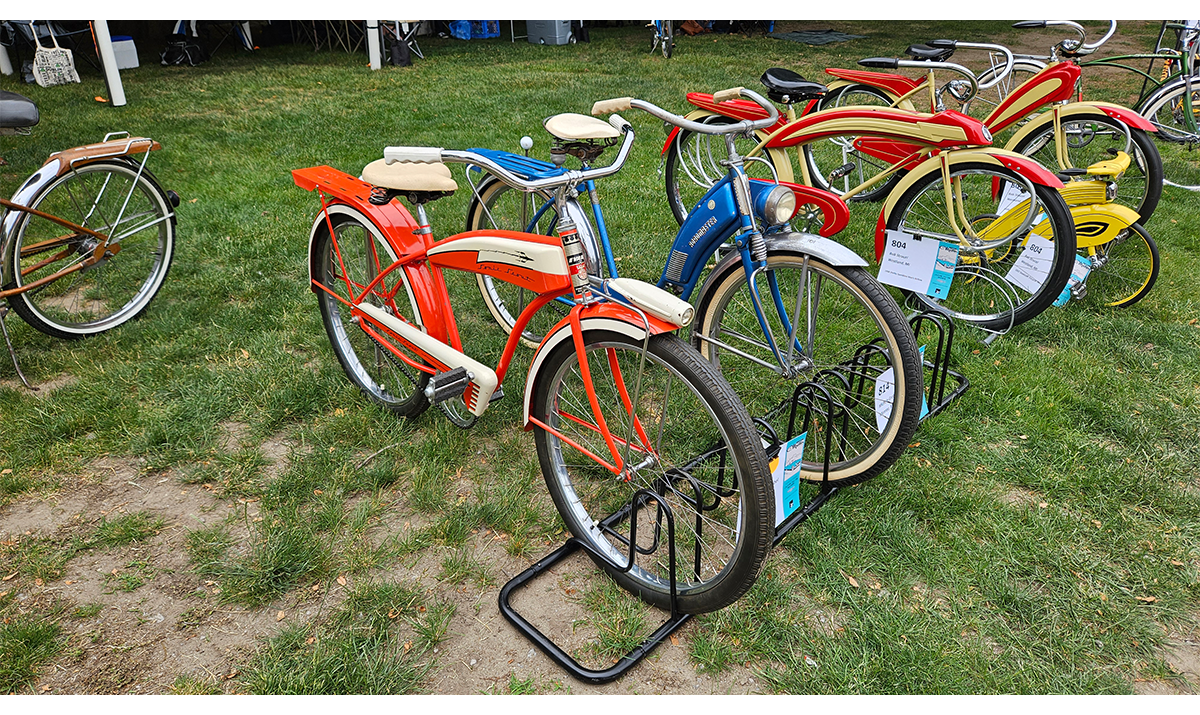 Bicycles, like this orange 1955 Evans Sonic Scout, added non-motorized charm to Motor Muster. / Image by Matt Anderson
Bicycles, like this orange 1955 Evans Sonic Scout, added non-motorized charm to Motor Muster. / Image by Matt Anderson
Pedal-powered transportation is in vogue at The Henry Ford thanks to Bicycles: Powering Possibilities, a temporary exhibit now on view in the Collections Gallery in Henry Ford Museum of American Innovation. There were many bikes to enjoy at Motor Muster, from an eccentric-hub Ingo-Bike like this one in the museum’s collection, to an early 1970s Schwinn Twinn tandem that allowed two cyclists to ride together. And just as Motor Muster vehicles need not be motorized, they don't have to travel on land either. We celebrated outboard boating’s golden age on the shores of Suwanee Lagoon. The fascinating display of boats and engines was titled “Tailfins and Two-Tones,” reflecting a couple of 1950s design fads that were found on land and sea alike.
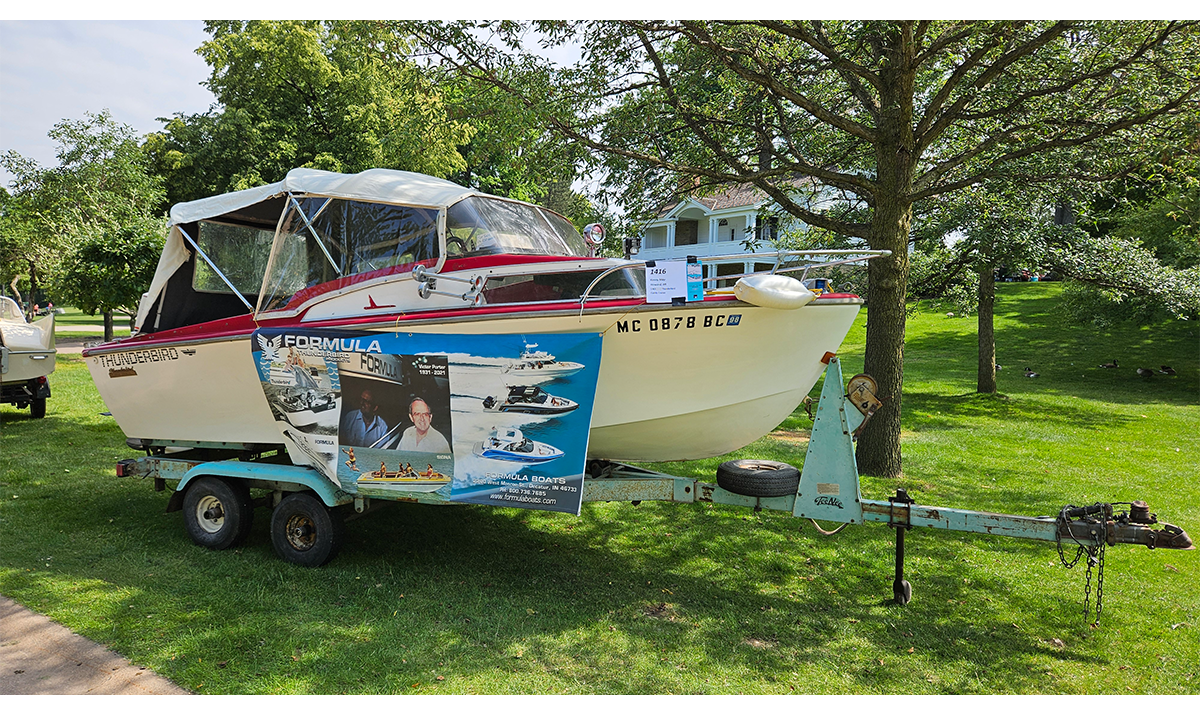 It’s a T-Bird of a different sort: a 1963 Thunderbird Cuddy Cruiser built by Formula Boats. / Image by Matt Anderson
It’s a T-Bird of a different sort: a 1963 Thunderbird Cuddy Cruiser built by Formula Boats. / Image by Matt Anderson
As is tradition, Motor Muster ended on Sunday with our awards ceremony. We presented trophies to vehicles from each decade based on popular-choice ballots submitted by show participants and visitors. We also gave Curator’s Choice prizes to a pair of unrestored vehicles. This year’s unrestored winners included, fittingly, a 1966 Ford Thunderbird and a 1974 Ford Gran Torino. The full list of 2025 Motor Muster winners is available here. The ceremony put a perfect cap on another wonderful weekend.
Matt Anderson is Curator of Transportation at The Henry Ford.

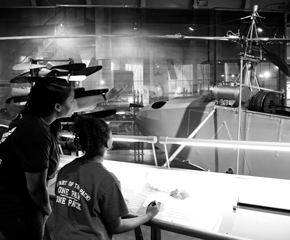
Facebook Comments